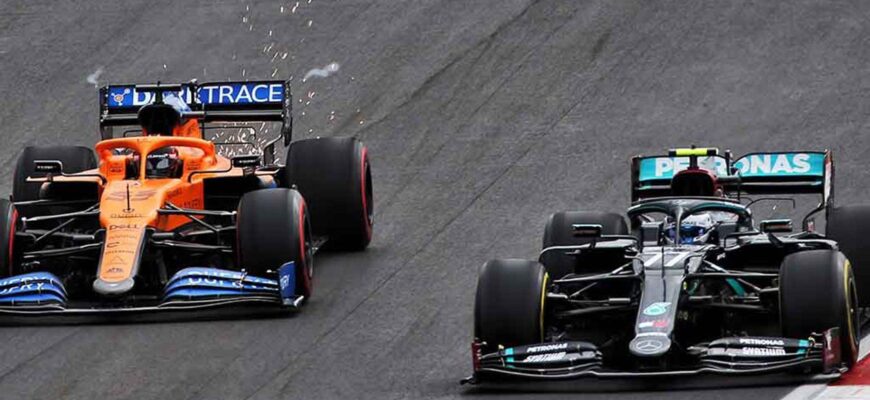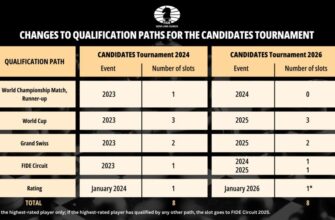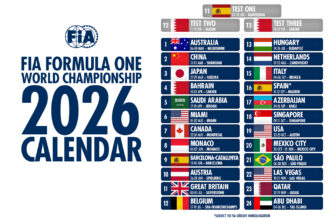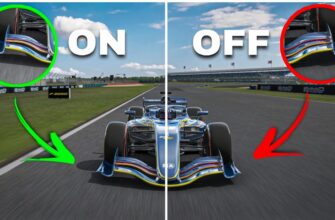SUZUKA, Japan — After Sunday`s Japanese Grand Prix, a familiar question arose: Is overtaking becoming a significant challenge in Formula 1?
Despite Max Verstappen`s dominant victory, the race highlighted a noticeable lack of overtaking maneuvers throughout the field. Post-first lap, there were only 15 overtakes, a sharp decrease from 48 at the same track in 2024 and 29 in 2023. Remarkably, 11 drivers maintained their starting positions to the finish line.
The lack of action wasn`t just apparent to viewers; drivers themselves found the 53-lap race at Suzuka to be monotonous.
Nico Hulkenberg of Sauber summarized the race as `long, dull, and uneventful` after finishing in 16th place, where he started. He noted the difficulty of racing in traffic and the frustration of being stuck behind other cars in the DRS zone due to the impact of dirty air.
Carlos Sainz of Williams, who managed a couple of late-race passes but still finished 15th from his starting position, drew a comparison to Monaco. Monaco`s extreme lack of overtaking in 2024 prompted F1 to enforce two pit stops for this year`s race to artificially increase excitement.
`The midfield is incredibly competitive, and on a circuit where you need a 0.7 to 0.8-second advantage to overtake, a race with significant position changes was unrealistic,` Sainz commented. `This track is increasingly resembling Monaco in terms of overtaking difficulty.`
Even for rookie Gabriel Bortoleto, experiencing the high-speed Suzuka circuit for the first time, the race became tedious.
`It wasn`t difficult, just a bit boring to follow the car ahead,` the Brazilian driver stated. `Even with a pace advantage, especially towards the end, it wasn`t substantial enough to make a decisive overtake.`
`I attempted to overtake twice but couldn`t get alongside at the end of the straight. It`s unfortunate, but we move forward.`
Reasons for Overtaking Challenges in Japan
Following a similar lack of wheel-to-wheel racing at the Chinese Grand Prix, the scarcity of overtaking in Japan has reignited concerns about the spectacle of F1. Formula 1 has consistently focused on improving its `show,` implementing regulation adjustments since 2009 to boost overtaking and mitigate the effects of `dirty air.`
Aerodynamic performance remains a critical differentiator in F1. Aerodynamic surfaces are optimized for maximum lap time in clean airflow. While some consideration is given to wind sensitivity, simulating the turbulent air behind another car is complex. Developing for clean air performance remains the priority.
The 2022 regulations, emphasizing underfloor aerodynamics, aimed to enhance overtaking and reduce performance gaps. The intention was to lessen the impact of dirty air on a following car`s aerodynamics. Initial improvements were noted between the end of 2021 and the start of 2022.
However, after four seasons of intense development, cars have become more aerodynamically sensitive again. Drivers are encountering the `invisible wall` of dirty air when approaching the car in front.
Alpine`s Pierre Gasly noted, `It felt very challenging to get close on Sunday evening. Once within 0.6 or 0.7 seconds, closing the final gap became extremely difficult.`
`With similar car performance levels, and limited tire management needed, overtaking becomes very hard. That’s the current situation.`
The reduced downforce in dirty air also strains tires. Following closely overheats tires as they compensate for lost aerodynamic performance, further hindering overtaking attempts. Drivers often close in, struggle in dirty air, then back off to cool tires before trying again.
This gives the leading driver an advantage with clean airflow, while those behind manage overheating tires at a disadvantage.
McLaren team principal Andrea Stella commented, `Ultimately, increased aerodynamic downforce amplifies performance loss in dirty air. Dirty air is a persistent issue. Even with the 2022 car generation designed to improve following, aerodynamic development has made cars so aerodynamically dependent that performance drops significantly when following.`
While dirty air is not new, recent aerodynamic development doesn`t fully explain the 68% overtake drop at Suzuka from 2024 to 2025. A key factor was track resurfacing, creating smoother asphalt with minimal tire degradation.
This meant drivers like Lando Norris, close to Verstappen, lacked the performance advantage for overtaking. McLaren`s tire management is usually an advantage, but the new Suzuka surface negated this.
Norris stated, `It was flat-out racing, but pace was too similar for changes. Max drove flawlessly, and qualifying positions were decisive.`
Stella added, `Lando pushed to close on Verstappen, but overtaking required a 0.7 to 0.8-second advantage on this track.`
`Normally, tire degradation helps create lap time differences, but Suzuka`s new tarmac significantly reduced degradation, making it a low-degradation circuit with limited strategy options.`
`Usually, tires add variability. On high-degradation circuits, better tire management can create a significant speed advantage. This year, that factor was absent due to minimal tire degradation.`
Shanghai`s resurfacing also contributed to similar race characteristics two weeks prior. Fernando Alonso noted drivers will always find something to critique.
`One-stop races may be less exciting than multi-stop races with tire variance,` he said. `But when grip is low, we complain; when there are too many stops, we complain about tire durability. Instead of focusing on negatives, I appreciate the weekend. Suzuka was great again.`
Possible Solutions for More Exciting Races
While dirty air issues have resurfaced, the 2022 regulations did narrow team performance gaps. Qualifying at Suzuka showed less than a second separated the fastest car (Piastri`s McLaren) and 16th place (Hulkenberg), highlighting tighter competition.
With such tight margins, limited overtaking is expected, especially with the 0.8-second overtake advantage needed at Suzuka. The 2025 Japanese Grand Prix, despite limited overtakes, was closer than 2024, where Verstappen`s lead over the third-place non-Red Bull car was 20 seconds.
If overtaking remains limited, this season may become more about qualifying performance than race action.
Ferrari team principal Fred Vasseur stated, `Qualifying is always crucial, especially when gaps are small. It becomes more of a `quali` championship.`
Bahrain will be a better test. Its abrasive surface and layout offer more overtaking opportunities, with higher tire degradation and potential for action.
As Alonso notes, some races will be less action-packed, and each circuit has unique qualities.
`This is Suzuka. I don`t recall many overtakes here without weather changes. We often say how great Suzuka and Monaco are pre-race, then post-race, Monaco is boring, Suzuka is boring.`
`This is Formula 1. Suzuka is fantastic, especially for Saturday`s high-adrenaline qualifying.`









